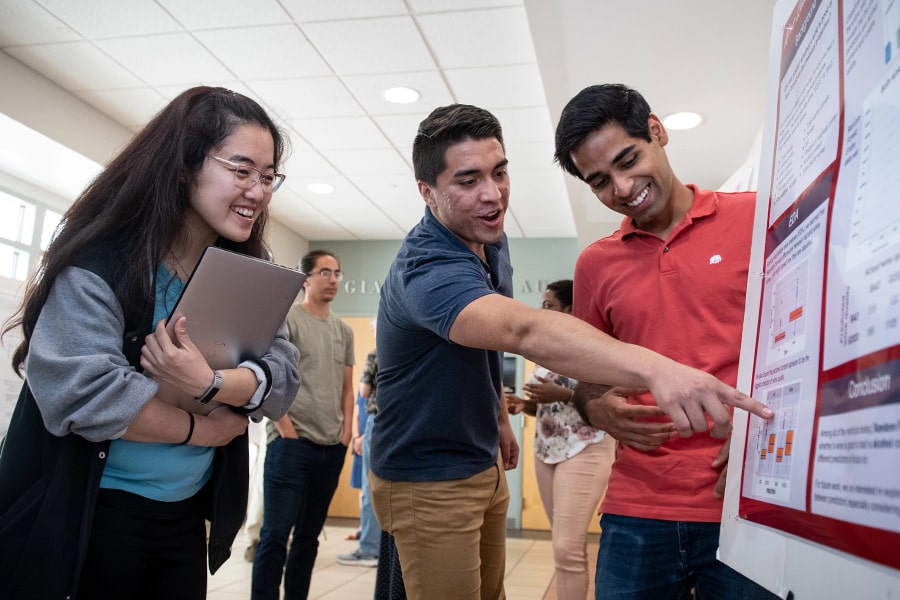Ranked #5 in U.S. News and World Report's Best Statistics Graduate Programs in America
Statistics & Data Science Ph.D. Programs
Our Ph.D. programs immerse students in various cutting-edge research opportunities, where they develop innovative data analysis methods to tackle complex interdisciplinary problems and advance the underlying theoretical foundations driving those methods.
Our Ph.D. programs in Statistics offer a dynamic blend of theoretical rigor and real-world application, equipping students with the skills to lead in academia, industry, and government.
Through immersive coursework, hands-on research, and collaboration with esteemed faculty, our students develop innovative statistical methodologies that push the boundaries of the field. Most students complete the program within 4-5 years, during which they build a strong foundation in both traditional and cutting-edge statistical practices. Our graduates leave our program prepared to tackle complex challenges and drive meaningful advancements in their chosen careers.
What sets our Ph.D. experience apart?
Innovative Joint Ph.D. Programs
Our four joint Ph.D. programs invite students to dive into diverse fields such as machine learning, public policy, neuroscience, and the dynamic intersection of engineering and policy—equipping students to lead in today’s most transformative interdisciplinary areas of research.
Collaborate with World Renowned Machine Learning Department
CMU is a trailblazer in Machine Learning and Computer Science. Through our joint Ph.D. program in Statistics and Machine Learning, students gain exclusive access to world-class ML research and renowned faculty, many of whom hold joint appointments in both fields. This unique blend of expertise offers an unparalleled opportunity to be at the forefront of cutting-edge advancements in Statistics and Machine Learning.
Interdisciplinary Research Opportunities
Our faculty are deeply engaged in pivotal, data-rich scientific collaborations across diverse fields such as genetics, physical sciences, neuroscience, astronomy, and the social sciences. This opens doors for students to explore pressing questions and access the data essential for uncovering meaningful insights.
Immersive Research Experience
In their second semester, students start working on their Advanced Data Analysis Project - a distinctive, year-long collaboration with faculty that goes beyond traditional thesis work. This immersive experience offers an immediate opportunity to dive into intensive research, fostering hands-on skills and innovative thinking.



